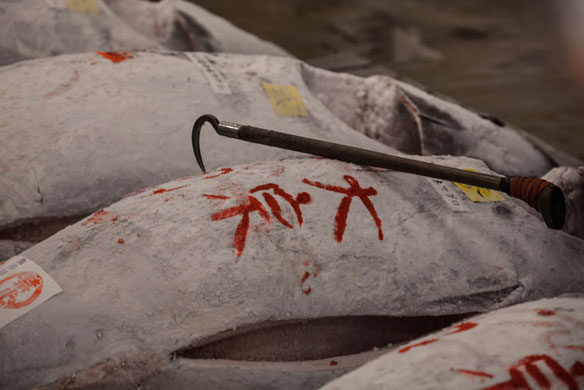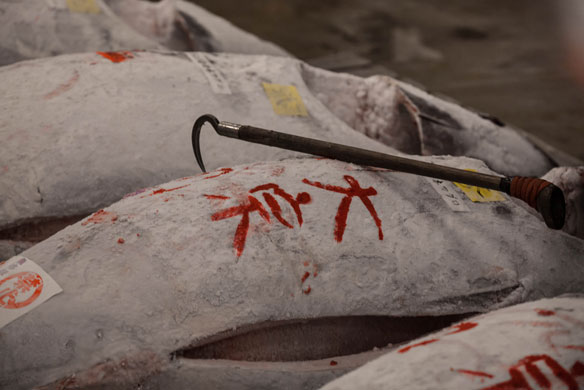
Tsukiji Fish Market in Tokyo, is one of the major hubs for the transport and sale of sushi in the world. Captions and Photo source: ©© Adametmal
Excerpts;
In Japan, a nation that eats prodigious amounts of seafood, one question sits high on the list of public concerns: Is seafood caught after the Fukushima nuclear catastrophe safe for human consumption?
In the wake of the disaster, coastal fisheries in Fukushima and all neighboring precincts were quickly closed. Within two weeks, the Japanese government began monitoring radioactivity in fish, shellfish, and edible seaweeds. More than a year later, not because of new scientific findings or any changes in offshore conditions, but in an attempt to further reassure consumers, the government lowered the acceptable limit for radiation in fish from 500 becquerels per kilogram—already among the strictest standards in the world—to 100 Bq.
Last fall, Ken Buesseler, a marine geochemist at Woods Hole Oceanographic Institution, combed through a year’s worth of data released by the Japanese fisheries agency. His analysis, published Oct. 26, 2012, in the journal Science, showed that the “vast majority” of fish being caught off Fukushima and surrounding areas had radiation levels below the tightened safe-consumption limit. Among bottom-dwelling species, however, 40 percent came in over that limit. Most important, levels of radiation in the ocean and in seafood did not appear to be declining in the 12 months following the accident…
Read Full Article, Oceanus Magazine, Woods Hole Oceanographic Institution
Radioactive Fish Near Fukushima Suggest Ongoing Contamination, Scientific American
A fish contaminated with radiation levels more than 2,500 times the legal limit has been caught near Japan’s crippled Fukushima Daiichi nuclear plant.
Fears Accompany Fishermen in Japanese Disaster Region, The New York Times
Fishing for Answers off Fukushima, Woods Hole Oceanographic Institution









